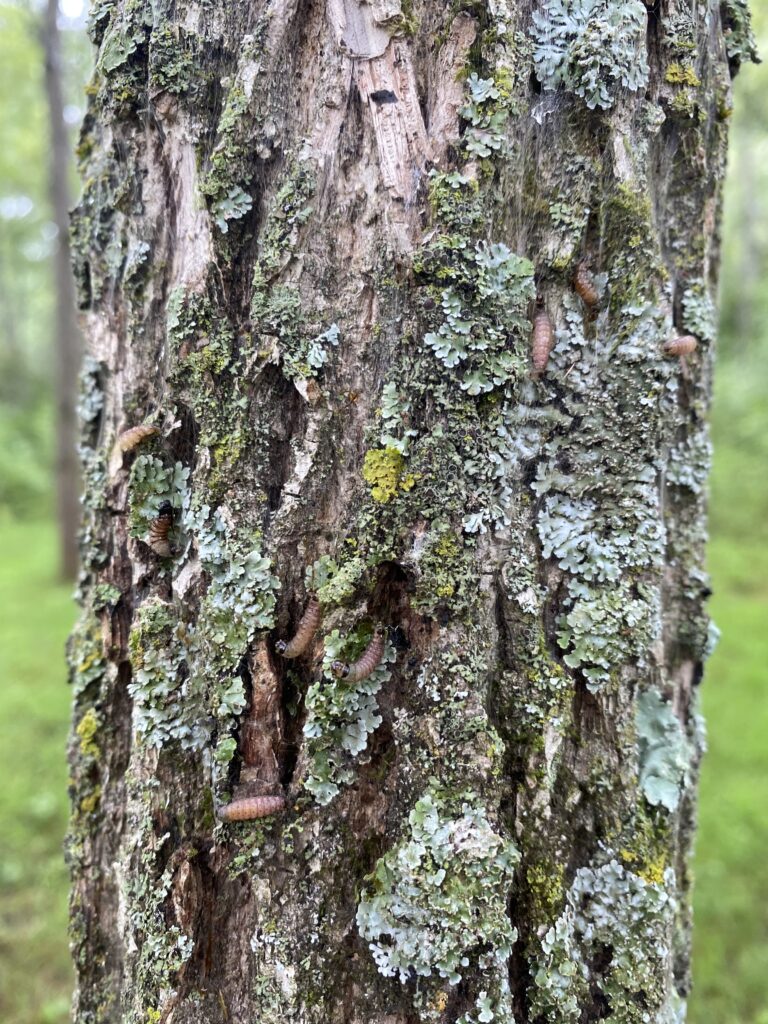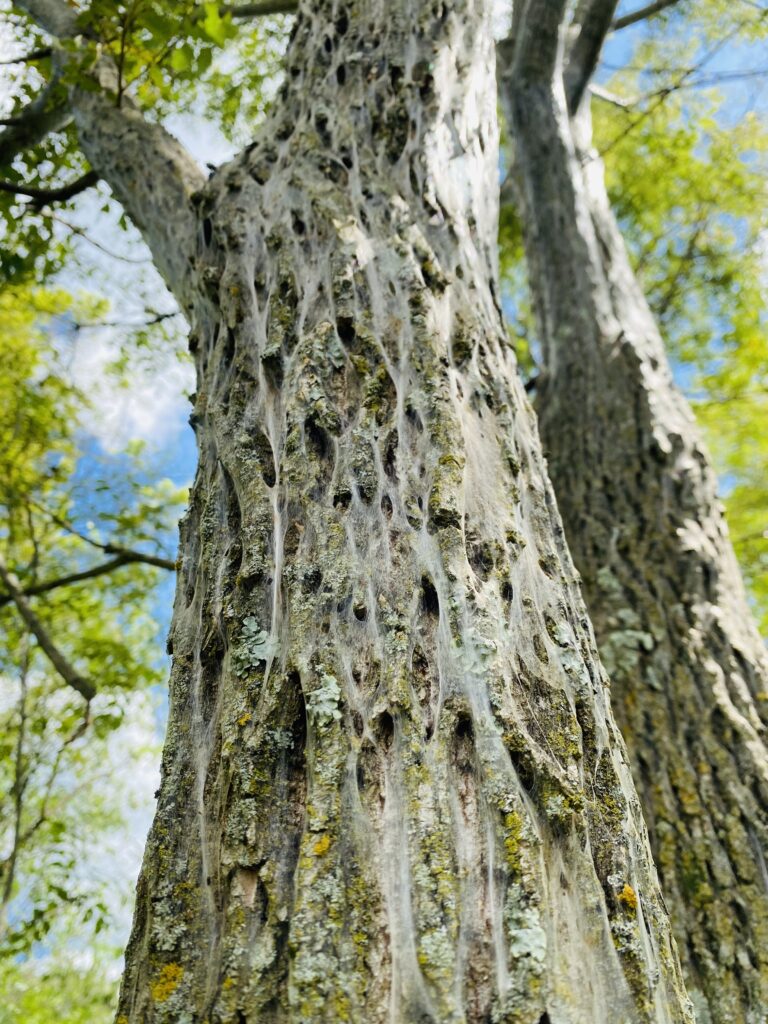Article by: Mike Hillstrom, Forest Health Specialist
In 2020, forest health staff in Wisconsin, Minnesota and Iowa received calls about black walnut stands being defoliated and webbed. In 2021, the defoliation expanded to multiple additional black walnut stands in southwest Wisconsin, while northeast Iowa and Minnesota continued to see damage. Recently, molecular work completed by the Wisconsin Department of Agriculture, Trade and Consumer Protection has identified the larvae causing the damage as a native Tortricid moth, Gretchena amatana.

G. amatana caterpillars on tree.

Fine webbing covers walnut tree trunk.
Tortricid caterpillars are known leafrollers, which may explain the webbing on trees. While the larval host plant of G. amatana is unknown, other Gretchena larvae also feed on Juglandaceae host plants.
The Forest Health team’s goal for 2022 is to find moths to confirm the identity and learn more about the life cycle and damage caused by G. amatana. If you have concerns or suspect local damage from these insects, reach out to your local forest health staff. Stay tuned for more details as we investigate this new walnut pest.

A webbed and defoliated black walnut tree in Green County, Wisconsin.
